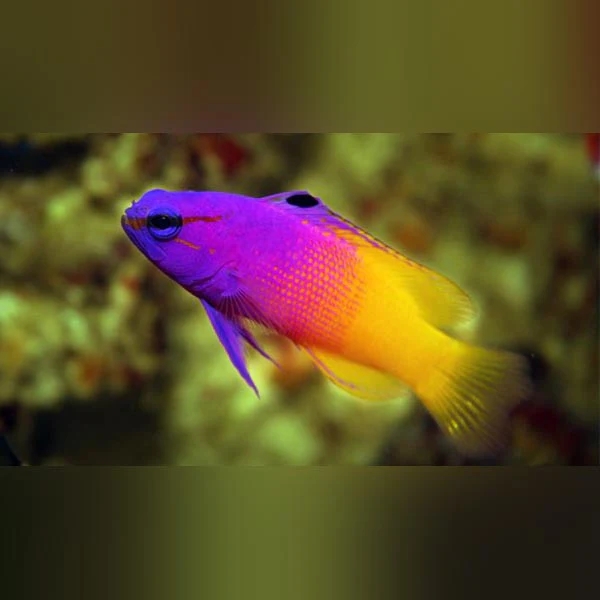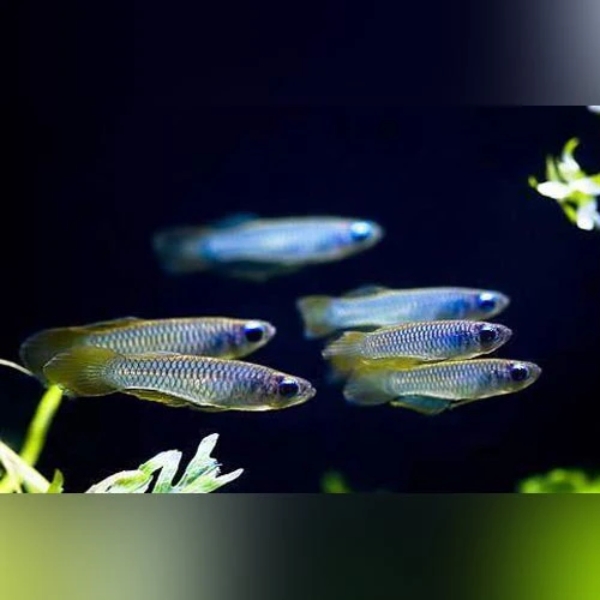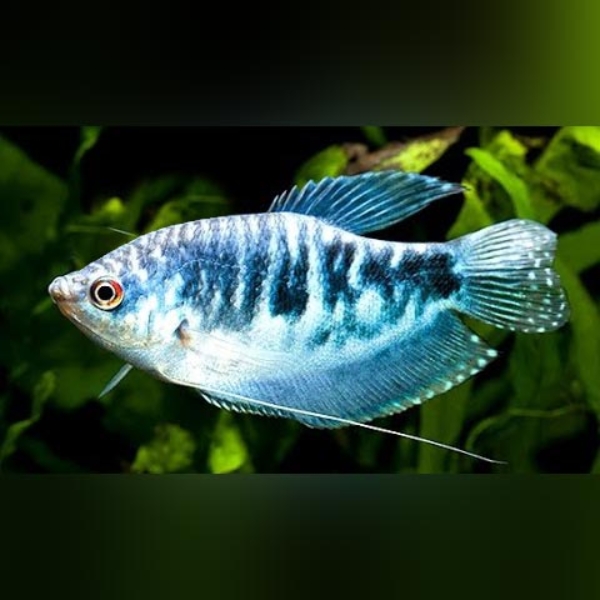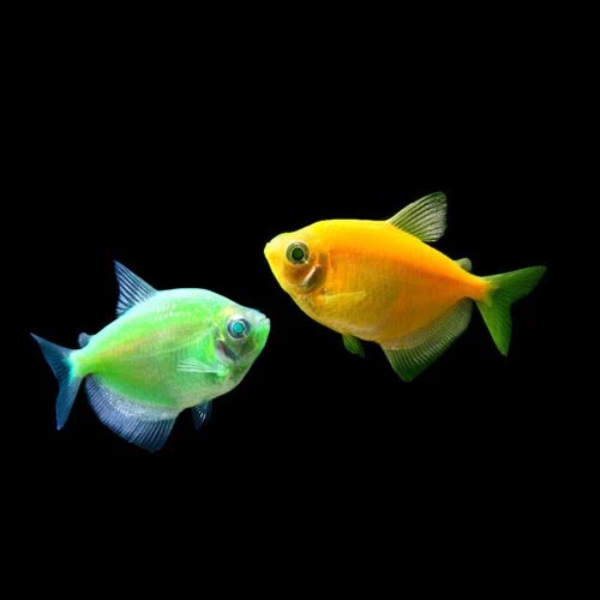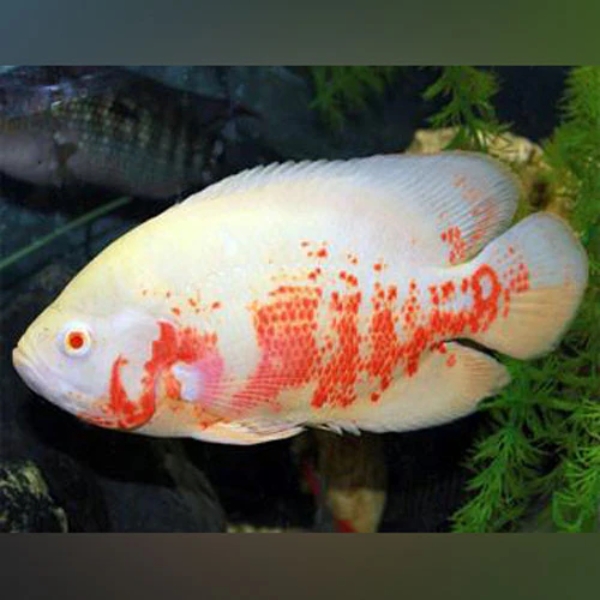The Royal Gramma, a small yet vividly colorful reef fish, is a popular choice for saltwater aquariums. Known for its bright purple and yellow coloration, this hardy species is both visually striking and easy to care for, making it ideal for beginner and experienced aquarists alike. But what makes the Royal Gramma so special? Let’s dive deeper into its features, care requirements, and why it’s an excellent addition to your aquarium.
Table of Contents
ToggleRoyal Gramma Feature
The Royal Gramma (Gramma loreto) is famous for its two-tone body, blending from a vibrant purple at the head to a bright yellow at the tail. This unique gradient coloration makes it a standout in any reef tank. Native to the Caribbean Sea, these fish can be found living among coral reefs and rocky crevices, where they make their homes in small caves.
Size and Appearance
Royal Grammas typically grow to about 3 inches in length, making them a relatively small species compared to other saltwater fish. Their oval-shaped bodies, small mouths, and large eyes contribute to their overall cute and appealing look. Despite their small size, they exhibit a bold personality, often darting in and out of rocks and corals.
Temperament
Though they may look delicate, Royal Grammas are quite territorial, especially when it comes to their chosen hiding spots. They can be aggressive towards similar-sized fish, particularly other Grammas or similarly colored species. However, in most cases, they’re peaceful and can coexist with a variety of tank mates in a well-maintained aquarium.
Natural Habitat of the Royal Gramma
The Royal Gramma originates from the warm waters of the Western Atlantic Ocean, particularly in the Caribbean. It thrives in rocky environments, using its surroundings as protection from predators and as a hunting ground for small invertebrates.
Preferred Water Conditions
In the wild, Royal Grammas are found in waters with temperatures ranging from 72°F to 78°F, moderate to strong water flow, and a stable pH level between 8.1 and 8.4. When replicating these conditions in your tank, it’s essential to maintain consistency, as sudden changes in water quality can stress the fish and lead to health issues.
Caring for Your Royal Gramma in an Aquarium
Taking care of a Royal Gramma is relatively easy, as they are hardy fish that adapt well to life in captivity. However, there are specific needs to consider to ensure they remain healthy and happy.
Tank Size and Setup
For a single Royal Gramma, a tank size of at least 20 gallons is recommended. If you plan on keeping them in a community tank with other fish, it’s best to opt for a larger tank of 30 gallons or more. Make sure your tank is well-equipped with plenty of hiding spots, as Royal Grammas love to explore caves and crevices. Live rock formations will not only provide shelter but also help maintain the water quality by acting as a natural biological filter.
Feeding the Royal Gramma
Royal Grammas are carnivorous and thrive on a diet of meaty foods. In the wild, they feed on plankton and small crustaceans. In captivity, you can offer a variety of frozen or live foods such as brine shrimp, mysis shrimp, and finely chopped seafood. High-quality pellet or flake food designed for carnivorous fish can also be part of their diet. It’s essential to feed them small portions twice a day to mimic their natural feeding habits.
Ideal Tank Mates for Royal Gramma
When choosing tank mates for the Royal Gramma, it’s important to consider their territorial nature. While they can be aggressive towards fish of similar size and color, they generally coexist peacefully with larger, more passive species.
Best Tank Mates
- Clownfish
- Tangs
- Damsels
- Blennies
- Gobies
These fish are non-competitive for the same hiding spots and food sources, making them excellent companions for Royal Grammas.
Tank Mates to Avoid
Avoid housing them with aggressive fish like larger wrasses or fish that may see them as prey, such as large groupers or lionfish. Other Gramma species or similar-looking fish should also be avoided to reduce territorial disputes.
Breeding Royal Gramma in Captivity
If you’re interested in breeding Royal Gramma in your home aquarium, you’re in luck! These fish are relatively easy to breed in captivity, provided the right conditions are met.
Breeding Setup
To encourage breeding, the tank should have ample caves or crevices for the pair to hide and build their nests. Males will court females by performing a series of dances and color displays, after which the female will lay her eggs in the nest. The male will then guard the eggs until they hatch, which typically takes around 5-7 days.
Common Health Issues for Royal Gramma
Like all aquarium fish, the Royal Gramma is susceptible to specific health problems, particularly if water quality is not maintained.
Marine Ich
One of the most common diseases that affect Royal Grammas is Marine Ich (Cryptocaryon irritans), a parasitic infection that manifests as white spots on the fish’s body. To prevent this, maintain stable water conditions and quarantine any new fish before adding them to the tank.
Bacterial Infections
Cuts or injuries can lead to bacterial infections if left untreated. Always keep an eye on your Royal Gramma’s behavior, and if you notice any changes in their eating habits or activity levels, check for signs of illness.
Royal Gramma’s Lifespan and Longevity
With proper care, the Royal Gramma can live for up to 5 years or more in a well-maintained home aquarium. Ensuring consistent water quality, a balanced diet, and a stress-free environment will help them live a long and healthy life.
Why Choose a Royal Gramma for Your Aquarium?
The Royal Gramma is not just a beautiful addition to any saltwater tank, but it also offers excellent value for aquarists of all experience levels. Their small size, vibrant colors, and hardy nature make them perfect for both beginners and experts alike.
Low Maintenance but High Impact
What’s great about the Royal Gramma is that it doesn’t require overly complex care. With regular feeding, proper water conditions, and a tank with plenty of hiding spaces, they will thrive. Despite their relatively low maintenance needs, their vibrant colors bring a high-impact visual appeal to your tank.
Personality in a Small Package
Though small, the Royal Gramma has a personality that shines. Their curious, yet sometimes shy behavior makes them fun to watch as they dart in and out of their hiding spots. It’s hard not to get attached to these little reef dwellers!
FAQs about Royal Gramma
- How big does a Royal Gramma get?
A Royal Gramma typically grows to around 3 inches in length. - What does the Royal Gramma eat?
Royal Grammas are carnivores and enjoy a diet of frozen or live meaty foods, such as shrimp and small crustaceans. - Can I keep more than one Royal Gramma in the same tank?
It’s not recommended to keep multiple Royal Grammas in the same tank due to their territorial nature. They may become aggressive towards one another. - How long do Royal Grammas live?
With proper care, Royal Grammas can live up to 5 years or more in captivity. - What should I do if my Royal Gramma develops white spots?
White spots are a sign of Marine Ich. Isolate the affected fish and treat the water with anti-parasitic medications.
In conclusion, the Royal Gramma is a wonderful choice for saltwater aquarists looking for a hardy, low-maintenance, and visually striking fish. Its bold colors, curious personality, and ease of care make it a standout in any aquarium setup.
Related products
Aquarium fishes
Aquarium fishes
Aquarium fishes
Aquarium fishes
Aquarium fishes

